- Home
- Patrick Robinson
The Shark Mutiny (2001) Page 26
The Shark Mutiny (2001) Read online
Page 26
Admiral Zhang would never forget the conversation. It had been on his mind for months. This very brilliant person, who had joined the Navy strictly as a sonics expert, was on to something. And now he was going to find out just how big, and whether it would work.
The three Admirals climbed out of the staff car, and two guards escorted them into an inner office of this highly classified laboratory. And there before them stood Lt. Commander Guangjin, who bowed politely, never having quite mastered the traditional Navy salute.
“Welcome, gentlemen,” he said, “to my humble quarters.” He’d never quite come to grips with the normal greeting of “sir” from a two-and-a-half to an admiral. But great scholarship has a dignity of its own, and no one noticed.
“Yushu,” he said, with an earth-shattering lack of formality to the highest-ranking Admiral in the world’s biggest nation, “it is especially nice to see you again—and I think you will be very pleased with me.”
Admiral Zhang smiled and patted this prodigy on the shoulder. The project belonged of course to the scientist, but Zhang had made it possible, and if it worked, history would judge them both kindly.
Mr. Guangjin walked to the rear of his long, bright work area and led the way into a darkened room, lit only by the backlighting of the computer screens, in almost every respect a replica of a warship’s ops room.
He paused before a screen upon which there was an illuminated grid. “That’s it, Yushu, just as we planned it. Operation Paving Stone, eh? Ha-ha, and now, as you know, we have two test sites ready for us. We have a towed-array frigate way up in the north in the Yellow Sea, and another in the Pacific, six hundred miles off our southern coast. Both ships have in the last hour thrown the device over the side, and are ten miles distant.
“The device is at present passive…and now I am going to activate the one in the Yellow Sea. You, Yushu, will speak personally to the sonar room in the frigate.”
He handed a telephone to the senior Admiral, who spoke into it. “This is Admiral Zhang. Will you please inform me what is happening?”
“This is Lieutenant Chunming, sir. Right now we have nothing on the screen. Just the usual waterfall. Please stay on the line.”
And now, Guangjin moved to the control keyboard that was set before the grid-screen. “Activating now,” he said pressing the keys.
The room was silent, as the electronic pulses flashed to one of two Chinese satellites. And then Admiral Zhang heard down the phone, “Lieutenant Chunming, sir. I’m getting something…and it’s engine lines…transient contact…just seven seconds…but I’m certain it’s a submarine…making a turn…one moment, sir, the computer’s trying to match the lines…it’s coming up, sir, this is a Russian-built Kilo-Class diesel-electric. No doubt. The pattern fits precisely.”
The Admiral replaced the telephone. And he turned to the scientist and held out his hand. “Remarkable,” he said. “Quite, quite remarkable.”
“And now we shall try the second one, way out in the Pacific. Please hold this telephone, and I will attempt to activate…”
Four minutes later, an almost ecstatic Zhang Yushu heard another sonar officer in a distant Chinese frigate say to him, “Here it comes, sir. Right here we’ve caught a transient on a Russian-built Kilo-Class submarine.”
201300MAY07.
USS John F. Kennedy.
20N 125E. Speed 20. Course 315.
Big John was steaming over 3,000 fathoms of water. All flying had been canceled for two days because of a severe storm, and the personnel of the Black Aces, Top Hatters and Golden Warriors were bored by the inactivity. Nonetheless the forecast was good, the storm had abated and the carrier was currently in the Philippine Sea, 180 miles northeast of Cape Engano. That put her 270 miles southeast of the Taiwan coast, but just 150 miles short of her ops area.
These were the usual patrol waters of the U.S. Navy, the world’s policeman, protecting the rights of the citizens of the nation of Taiwan. The area was a triangle, its shortest side 90 miles long facing the central eastern coastline of the island, around 50 miles off the beaches. The other two sides were each 150 miles long, joining at a point close to the 125-degree line of longitude. Most of the water inside that triangle was 15,000 feat deep.
And the JFK was steaming straight toward it, high, wide and handsome, no secrets, no subtlety, no intent to deceive. Just one thunderous iron fist, the same one that had warned Red China for half a century: Stay out of our buddies’ backyard.
And now, here they came again, pushing through the long Pacific swells, cleaving through 30-foot waves, 88,000 tons of steel-clad power, daring anyone to raise an objection. The new emblem patch of the Tomcat pilots uttered a thousand words in just two. Anytime, Pal.
Five hundred and seventy miles away, on a bright computer screen in the Southern Fleet HQ in Zhanjiang, there was a replica of the op area of the JFK. It showed a line 100 miles long, 50 miles off the eastern seaboard of Taiwan, and it fell back 150 miles into an oblong rather than a triangle. Essentially it represented the guesswork of a dozen ex-Chinese warship commanders, and it was not a bad guess at that. The JFK triangle fitted very neatly into Guangjin’s “box,” and the positional accuracy of the 100-mile line opposite the Taiwan beaches was nearly uncanny.
It was, of course, the result of years of study of U.S. Navy patrols, and all around the Chinese version of JFK’s op area was a 600-mile-long line in the shape of a sloped roof on its side, representing Admiral Zhang Yushu’s assessment of the Americans’ likely line of approach.
That was the line they were now watching for the carrier, and in precisely three hours from now, Big John would breach that line at 20.41N 124.18E. And the Chinese Navy satellites would relentlessly track her wherever she went.
Back in Zhanjiang, Lt. Commander Guangjin made another adjustment to his screen, and right over his U.S. op-area chart, there was now a much bigger square, 240 miles long north to south, 240 miles wide west to east. It was divided into grid squares numbered 1 to 6, and A to F. At almost every corner of each of the 36 squares there was a black circle. And every one of the those circles of course had a number, A-5 or C-4, just like any map reference. The U.S. ops area, into which the JFK was headed, was bang in the middle of this computerized grid.
Big John steamed on, now making just 12 knots since Admiral Daylan Holt had cleared the flight wings to begin operations at 1500. And the deck once more came alive to the howl of the jets and the surge of the deck crews, as the fighter-bombers screamed into the bright skies above the deep Pacific Ocean.
The course of the carrier now became erratic, certainly on the distant Chinese chart in Zhangjiang, because the JFK had to keep changing course to east-southeast, into the wind, for the landings and takeoffs. But her basic northern track up to the ops area remained steady.
She crossed Admiral Zhang’s outer line of approach at 1900. And the busy flying evening wore on in the great waterborne fortress of Big John. The Admiral’s ops room was receiving no reports of foreign warships anywhere in the area. Nothing from either of the two nuclear submarines riding shotgun out there off his port and starboard bows. Not a thing from the S-3B Viking ASW aircraft ranging out in front, dropping sonobuoys into the water, seeking any foreign submarine that might be lurking in these deep waters.
Behind this fast, powerful, deep-field ASW screen the rest of CV-67’s Battle Group, two destroyers and five frigates, moved safely through seas that had been “swept” by possibly the world’s sharpest ears.
At the current low speed, with a lot of course adjustments, Big John and her men were about eight hours short of their op area. Though Lt. Commander Guangjin did not need them to be in it, just heading up that way. And at 2200 he activated, via the satellites, the Chinese decoy station B-5.
Floating in the water, identifiable only by its ultrathin aerial wire, B-5 was just about invisible at 50 feet. It made one short, sharp transmission from approximately 100 miles northwest of the carrier, and three of the sonobuoys dropped by the V
iking picked it up instantly at range 15 miles and under.
Lieutenant (jg) Brain Wright had the signals on the aircraft screen instantly, and he assessed a rough position of a patrolling submarine at 21.20N 122.21E. The engine lines fed into the Viking’s onboard computer and moments later Brain Wright was contemplating the presence of a possible Russian-built Kilo-Class diesel-electric, in the water 100 miles from Big John. He guessed the submarine had just made a “dynamic start” of her engines, probably to charge her batteries. Everyone connected, in any way, with a big carrier is wary of a diesel-electric underwater boat because of its stealth at lows speed.
And Lt. Wright punched in his signal to the Admiral’s ops room “…Dynamic start possible kilo Class position 21.20N 122.21E. Transient contact…attempting to localize.”
The Viking, heading north, banked back hard to the east in search of the “intruder,” sweeping the sea with radar, looking for submarine that did not exist. It was just a brilliantly invented transmitter with a slim aerial wire jutting three feet out of the water, almost invisible by day, totally invisible by night. It was being activated at will by Lt. Commander Guangjin Chen 600 miles away in Zhanjiang: activated to transmit the uniquely chilling engine lines of the Kilo-Class Type 636.
Admiral Daylan Holt received the signal from comms at 2220 and instantly ordered a course change.
“Come right as soon as you can to Zero-three-Zero…cancel all flying.”
The JFK quickly retrieved two more fighter aircraft and then slewed slowly around in the water, settling thirty degrees east of north. It took the ship a full 15 minutes to make those maneuvers, and five minutes later, the Viking picked up a new transmission from one of the sonobuoys.
Again it was transient. To the sonar operator thundering though the dark skies above the Pacific it looked like a dynamic stop. He could see just a little curl at the base of the tiny bright “paint” near the bottom of his screen. It looked no nearer than the first contact, and he recorded it in essentially the same spot, suggesting in his signal to the flag that it was almost certainly the same contact they had located 20 minutes previously.
And there the minor drama seemed to end. Nothing more was heard from anyone. Flying continued unabated, Big John continued her zigzagging course for the landings and takeoffs and another 45 miles of water slipped beneath her keel.
But out over that pitch-black water, at 0145 in the morning, another Viking picked up another transient contact off two sonobuoys. And again they judged it to be a Kilo, but no one was certain whether or not it was the same one, because its position was roughly 50 miles northeast of the last one. Which meant it must have been making over 10 knots: unlikely because the American sonar would have picked it up.
For the second time that night a big U.S. Navy Viking banked around again to the east and again never caught a glimmer of anything. At least, not for a half hour, when a different buoy picked up what appeared to be a dynamic start. Neither of the two U.S. submarines, both deploying towed arrays, picked up anything. And the signal from the Viking to the flag was similar to the others…“Transient contact. Kilo-Class 636. Possibly same as Datum One. Rough position 21.53N 122.45E. Attempting to localize. Prosecuting.”
Guangjin Chen’s C-4 was proving as elusive as B-5. And now both of these devilish decoys, being instructed from the satellites, remained silent. And the entire U.S. Navy could have set off in pursuit and they would have found precisely nothing.
Nonetheless Admiral Holt was obliged to move his carrier farther east from his northern course, because a Kilo is simply too dangerous a ship to risk going close to, and anyway, easy to sidestep.
And once more the ocean world beyond Taiwan’s east coast went more or less silent. Big John steamed on approximately toward her ops area, but her present course would carry her right past the triangle, past the point to the east, unless she could turn in. But that seemed very doubtful at present, since there appeared to be at least one and possibly two Chinese submarines somewhere off her port beam, patrolling where Big John wanted to be. And the U.S. submarines were picking up nothing on the towed arrays.
Then, at 0545, the patrolling Viking tracker picked up the signal again, and this time it was appreciably closer to the carrier. In fact, it was still C-4 transmitting but the JFK was only 75 miles from the decoy now, instead of 100.
Admiral Holt did not like it. And he edged east again away from his op area. He simply could not go in there, if there should be one or more Chinese Kilos awaiting him. Particularly since everyone in the Navy now knew the SEALs had just banged out a $10 billion Sino investment down in the Strait of Hormuz.
The Admiral pressed on North for another 30 miles, and at 0804 on Monday morning, May 21, Guangjin Chen hit the computer buttons to activate C-3. A new field of U.S. sonobuoys picked up the transmission immediately, and the patrolling Viking’s signal to the flag caused major consternation. They assessed that this was an entirely different Kilo, and it was waiting bang in the center of CV-67’s op area.
Admiral Holt had the distinct feeling he was being pushed around by the Chinese Navy, and he was beginning to sense a feeling of rising frustration. Right now he had only one option, to make a swing right around the northeast end of the triangle and try to move in sometime in the next few days when the Kilos had tired of this game of cat and mouse. Nonetheless he could not take any risks, and he ordered a course change to the northeast, with his submarines moving out to his west, and the Viking pilots scanning the ocean with ever more vigilance.
For a long time there was nothing, and then just before midday the Viking picked up a new contact, and again it was a Kilo. It could have been the same one they heard at 0804, but it may very well have been a different one. The Chinese only own four Kilos, and privately Admiral Holt thought there were probably two of them out there. However, at 1200 (local), that was not quite the point. What mattered was that the Viking operator put the transmission only 56 miles off Big John’s port beam, and that was not good. Worse yet, it was continued, but not localized, by either of the SSNs.
In Admiral Holt’s opinion, this was becoming quite serious. There was, it seemed, at least one Chinese Kilo possibly as close as 50 miles from the carrier, and it seemed to be extremely elusive. Which was a shuddering thought for a U.S. admiral accustomed to controlling the ocean, on, above and below the surface for 200 miles in any direction wherever he roamed.
No admiral commanding a carrier battle group wants to go anywhere within 300 miles of a foreign, unfriendly, land-based air force, and he certainly wants no part of a marauding submarine. The Chinese ploy to have two Kilos on permanent patrol in the Taiwan Strait is based on the simple assumption that no U.S. admiral would steer a carrier down the Taiwan Strait if this were so. Neither would he.
And now, the steel-haired Daylan Holt, a Texan from Mesquite on the western edge of Dallas, was face-to-face with a brand-new kind of hardball international politics out on the northern edge of his own ops area. Of course he could sink the Kilo if he could catch it below the surface…IF he could find it.
But at that point, no one could find it, or even them, if there were two, despite having flooded the probability areas with radar, ESM and active and passive sonar from his submarines, aircraft and towed-array frigates. And it was beginning to look as though the JFK would have to continue northeast into the deep water at the southern end of the lonely Sakishima Islands, where Japan finally peters out into the Pacific. This is a very remote corner of the ocean, 300 miles southwest of the American base at Okinawa. The Sakishimas stand 120 miles west of Taiwan, 60 miles from the op area of Big John. Admiral Holt had an uneasy feeling he was being herded away from his objective by the demonic, near-silent Chinese submarines.
And the Chinese not only tracked the Americans all the way, at 1400 they activated E-1, some 80 miles north of the carrier, undetected by the outriding nuclear submarine. The Viking picked it up and signaled the flag. Admiral Holt briefly changed course, and as he did so, Guangjin a
ctivated D-2. Just a transient, seven-second transmission, which had the effect of pushing the carrier toward the waters south of the tiny island chain, to Ishigaki, where the water was deep, and which, by a grand design hatched in distant Zhanjiang, lay neatly in two outer squares of Lt. Commander Guangjin’s grid.
Admiral Holt was forced to turn north again, and he reasoned that the Kilo force, however many, was now to his left and right, but falling astern. If they wanted to get at his carrier, they’d have to transit northwest through the massive ASW barrier he’d set up. The decoy Kilo-buoys were indeed on either side of him, but the wily Zhang had stationed two real Kilos just 30 miles ahead of the CVBG. And he’d done it seven days ago.
And now they were almost stationary, transmitting nothing, preparing to launch a copybook attack on the U.S. carrier, identical to that of Commander Ben Adnam when he destroyed the Nimitz-Class carrier USS Thomas Jefferson in the Arabian Sea five years previously.

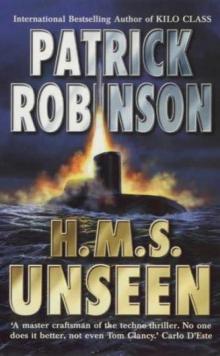 H.M.S. Unseen am-3
H.M.S. Unseen am-3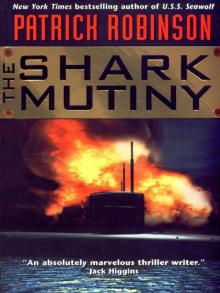 The Shark Mutiny (2001)
The Shark Mutiny (2001) Hunter Killer am-8
Hunter Killer am-8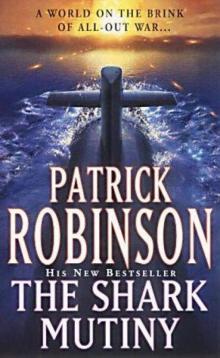 The Shark Mutiny am-5
The Shark Mutiny am-5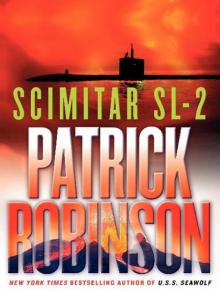 Scimitar SL-2
Scimitar SL-2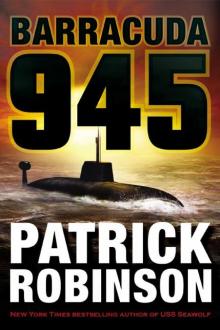 Barracuda 945 am-6
Barracuda 945 am-6 Hunter Killer
Hunter Killer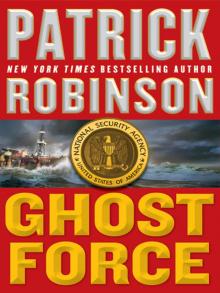 Ghost Force
Ghost Force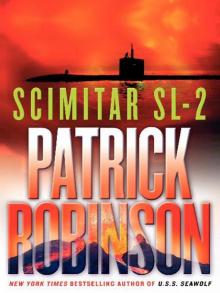 Scimitar SL-2 (2004)
Scimitar SL-2 (2004) Kilo Class am-2
Kilo Class am-2 The Lion of Sabray
The Lion of Sabray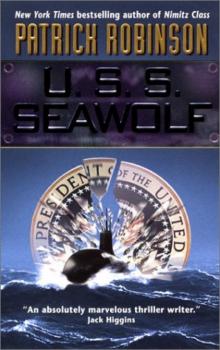 U.S.S. Seawolf am-4
U.S.S. Seawolf am-4 Ghost Force am-9
Ghost Force am-9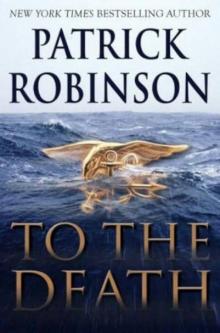 To the Death am-10
To the Death am-10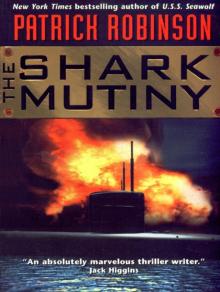 The Shark Mutiny
The Shark Mutiny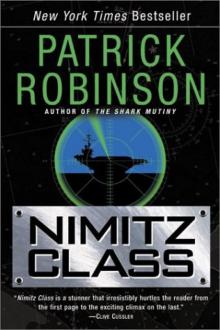 Nimitz Class am-1
Nimitz Class am-1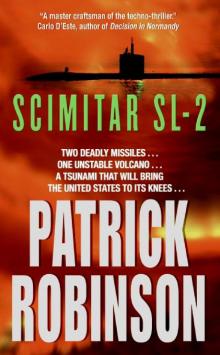 Scimitar SL-2 am-7
Scimitar SL-2 am-7 Barracuda 945
Barracuda 945 Intercept
Intercept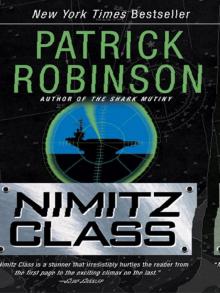 Nimitz Class (1997)
Nimitz Class (1997)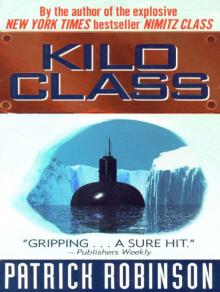 Kilo Class
Kilo Class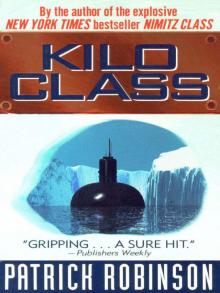 Kilo Class (1998)
Kilo Class (1998) Diamondhead
Diamondhead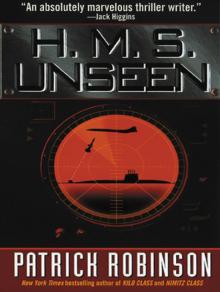 H.M.S. Unseen
H.M.S. Unseen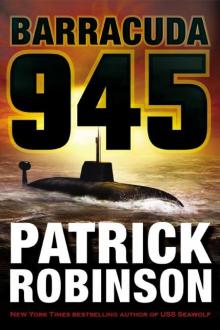 Barracuda 945 (2003)
Barracuda 945 (2003)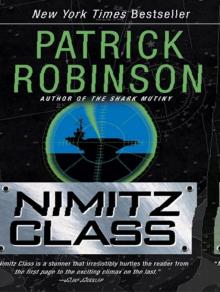 Nimitz Class
Nimitz Class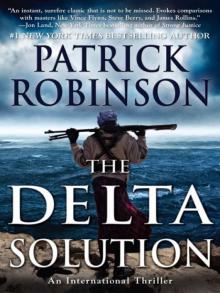 The Delta Solution
The Delta Solution U.S.S. Seawolf
U.S.S. Seawolf